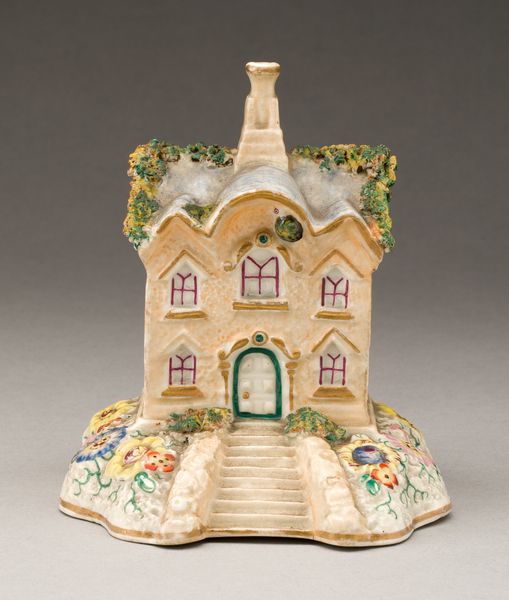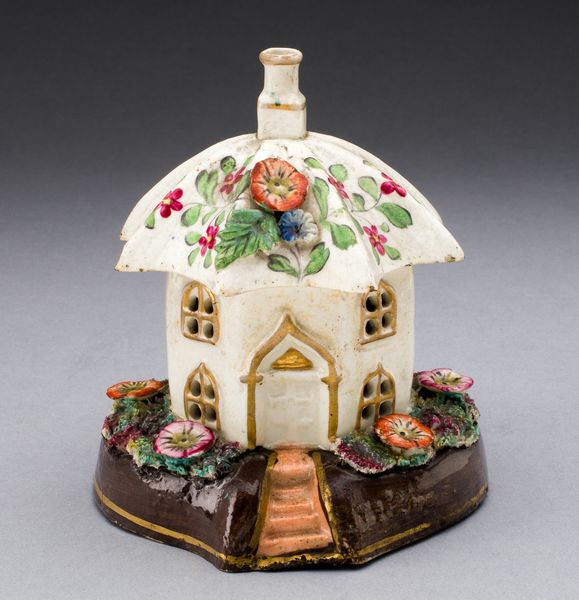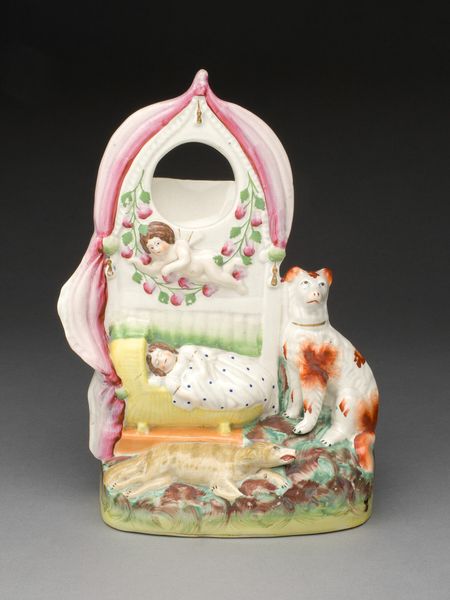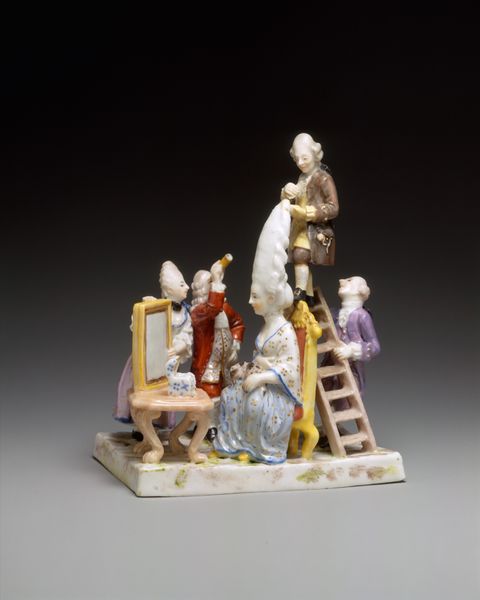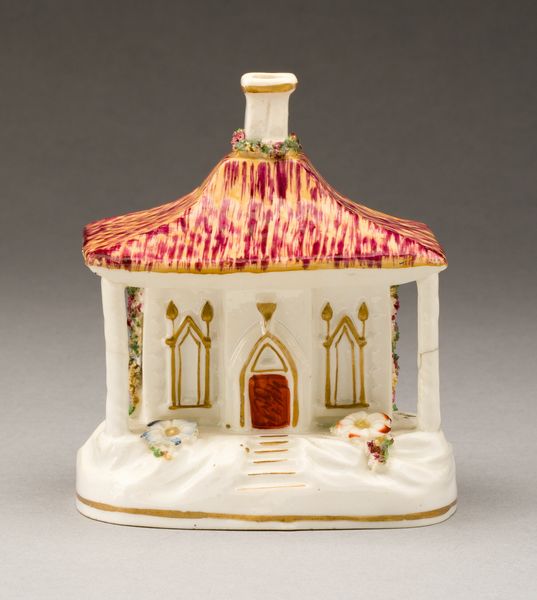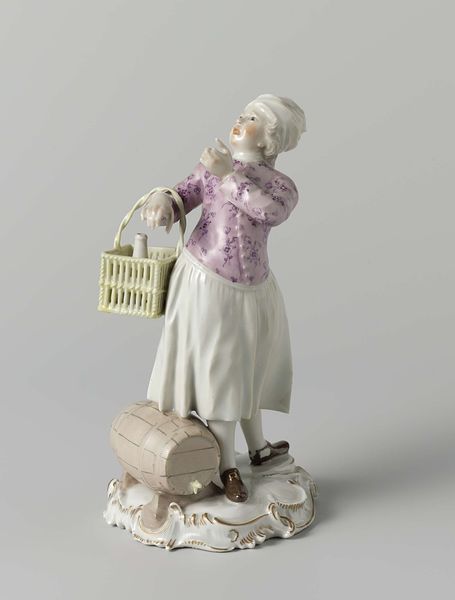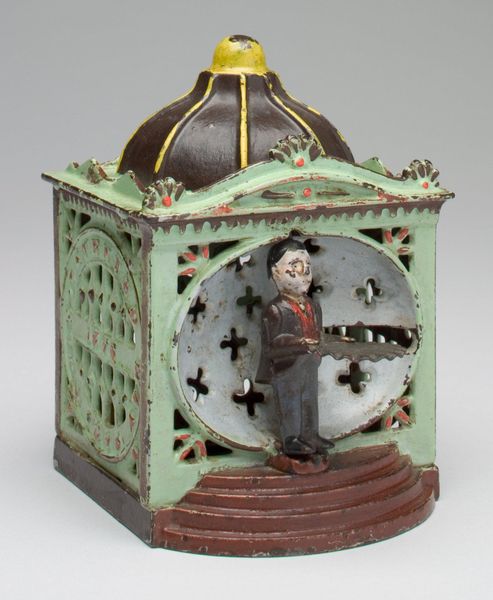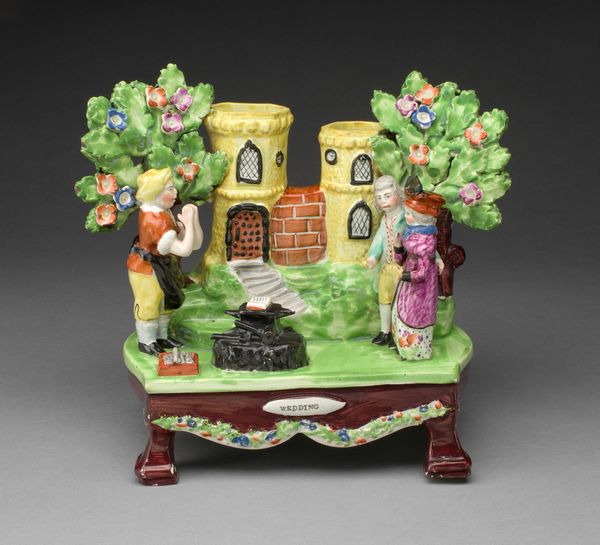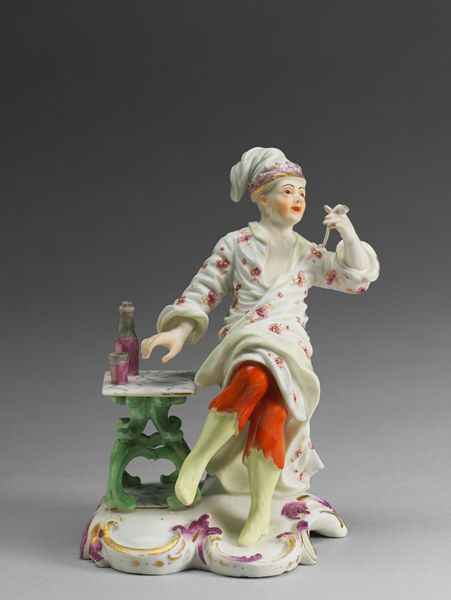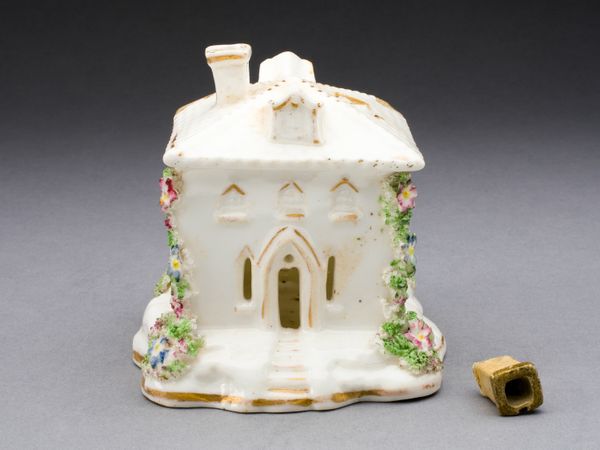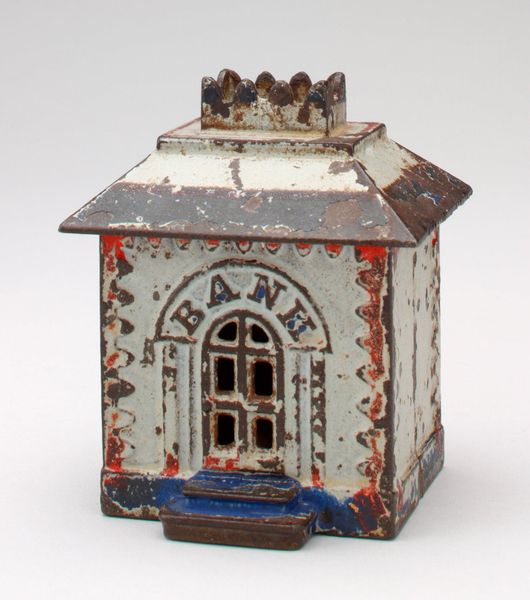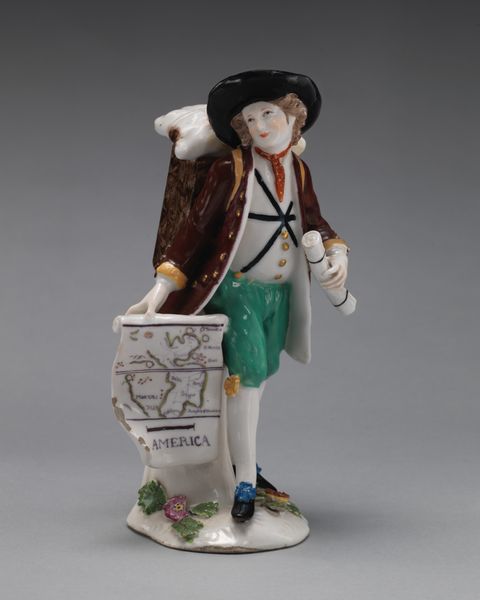
ceramic, porcelain, earthenware, sculpture
#
ceramic
#
porcelain
#
figuration
#
earthenware
#
sculpture
#
genre-painting
#
decorative-art
#
miniature
Dimensions: 5 1/4 x 2 7/8 x 2 1/4 in. (13.34 x 7.3 x 5.72 cm)
Copyright: Public Domain
Editor: This is an earthenware still bank, in the shape of a house. It’s titled '-Savings Bank (house)- still bank' and dates to the 19th century. I find the colours quite charming and playful. What symbols stand out to you, and what could they mean to people from the time? Curator: The house form itself is very telling. The home is often a primary symbol of security and stability, especially during periods of economic uncertainty. What kind of stories do you think this miniature architecture tells about aspirations for financial stability? Editor: That's an interesting idea – like domestic security being equated with economic security? What about the figure carrying the sack of money? Curator: Precisely! And note the figure – ostensibly a prosperous gentleman – bringing bags of money to deposit. Is he a responsible member of society, or is there perhaps an element of satire or social commentary in this portrayal? What if the individual savers weren't always successful and faced economic hardship? Editor: Hmm, satire. It makes me think about how saving was encouraged – even propagandized – back then, and how different that is now. Almost like it's feeding on a kind of insecurity about finances? Curator: Well, does this 'piggy bank' then encourage hope for a comfortable life, or subtly reflect a system where such comfort is elusive for many? Does it normalize personal anxieties regarding personal finance? Editor: That's given me a whole new perspective on what a simple object like this bank can represent. I guess there's a lot more to it than just somewhere to save your pennies! Curator: Exactly. Visual symbols and the stories they convey reflect deep cultural anxieties and longings that resonate across time. I hadn't thought about the contrast to contemporary attitudes towards finance, thanks for pointing that out!
Comments
No comments
Be the first to comment and join the conversation on the ultimate creative platform.
